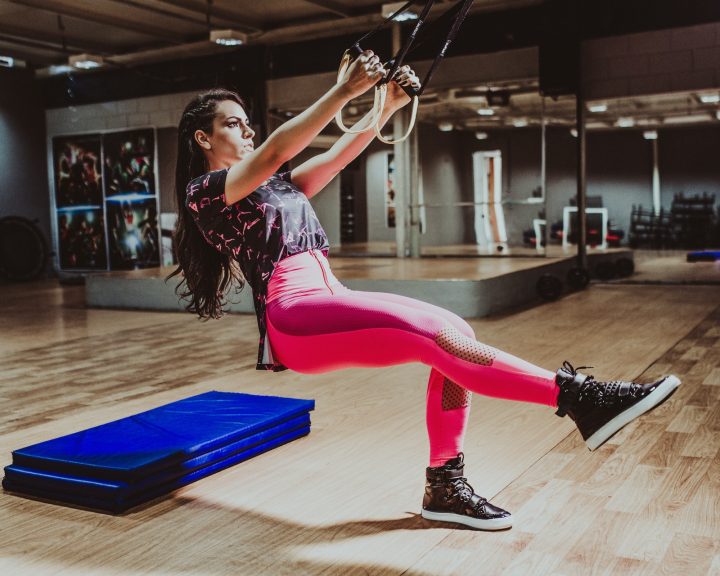Treadmills are used pretty extensively in the exercise science and strength and conditioning fields. They provide a lot of advantages for testing and for research. For example, it’s easier to film and analyze running/sprinting using a treadmill then a 100 meter course outside. While they are expensive, overspeed treadmills make it easier to train higher level athletes in speed training in a facility with a small footprint. Having land to coach sprinting can be a problem if you run a performance facility (land is expensive), so a treadmill might be preferred.
Having said that, there’s been a question for years about whether running on a treadmill is similar to running on a track, a field, or a court. If it’s not, then athletes using the treadmill from speed training might not be getting as much return for their time as they could be. Also, if the treadmill is not similar we might be setting up athletes for injury when they get on the court, or track, or field for their sport.
In a 2020 issue of Sports Medicine, Van Hooren et al performed a meta analysis to look at this very question. Is running on a treadmill similar to running overground?
It needs to be pointed out, before going any further, that the authors did not look at sprinting because it is difficult for commercial treadmills to reach these speeds. So I’ll have some thoughts on this later. The authors ended up looking at 33 studies that compared overground running with treadmill running.
Results:
- Treadmill running resulted in longer ground contact times.
- Treadmill running did not impact stride times.
- Treadmill running did not impact stride length.
- Treadmill running did not impact stride frequency.
- Treadmill running resulted in a less dorsiflexed angle at footstrike.
- Treadmill running resulted in more knee flexion at footstrike.
- Treadmill running resulted in less displacement of the pelvis.
- Treadmill running resulted in less propulsive forces.
Let’s start with some surface impressions. First, some of the differences mentioned above are trivial. However, if you work with high-level athletes where the minutiae matters, then they are not trivial. So in terms of surface impressions, based upon what the authors are reporting, there are differences between running on treadmills and running overground. These include spending more time on the ground, differences in the casting of the foot when it strikes the ground, more knee flexion when the foot is hitting the ground, and less propulsive forces (which I’m assuming is because they aren’t needed with the treadmill helping some and having some cushioning).
Case closed right? Treadmills result in different kinematics and kinetics and if you have to run on a court, track, or field then that’s where you should practice. Wait, not so fast. The challenge with a meta-analysis like this is there are some important details you don’t get a sense of from the article. First, this is running and not sprinting. Many times that means jogging and not sprinting. I think we’d all agree our technique is greatly relaxed when jogging as opposed to truly running or sprinting. Second, and this is important, those no control for technique.
The lack of technique, the lack of trained subjects, can greatly warp the results of the analysis. For example, when I coach any athlete how to sprint we focus on the mechanics, maintaining our posture especially at footstrike, learning to run in a way that we can move our limbs faster, and developing/applying strength/power for sprinting. In other words, we coach the athlete out of increased knee flexion at footstrike, out of plantarflexion at footstrike (i.e. running on our toes), etc. It’s very likely that many of the studies used for this article were looking at recreational runners, college students enrolled in a class, etc. In other words, not trained athletes. This means you have to use these results very carefully.
Can this be generalized and applied to sprinting? That’s hard. Most commercial treadmills won’t reach the velocities required for a good sprinting session. They are also difficult to program for those distances (for example, 40 meter sprints). There are commercial non-motorized treadmills that can be used for this, though.
Surprisingly, there isn’t a lot of good research on this topic (treadmill sprinting vs. overground sprinting), so it’s difficult to draw a research-based conclusion. Here’s what I do know though, the treadmill is a different surface that a court, a field, or a track and athletes need to be prepared to sprint on the surface they are going to sprint on.
I like to start the year off with grass and sometimes sand, but eventually we need to move to the surfaces the athlete is going to be competing on. If we don’t then we’re looking at shin issues from the volume of training and a lack of adaptations, knee pain, hamstring injuries, etc. So like with everything else, specificity matters.
References:
Van Hooren, B., Fuller, J.T., Buckley, J.D., Miller, J.R., Sewell, K., Rao, G., Barton, C., Bishop, C., and Willy, R.W. (2020). Is motorized treadmill running biomechanically comparable to overground running? A systematic review and meta-analysis of cross-over studies. Sports Medicine, 50, 785-813.




